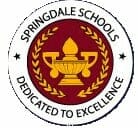Nov 3, 2016
Physical education teachers need better ways to assess student performance, and Robert Ferguson found a better way for teachers in Springdale (Ark.) Public Schools.
Springdale had utilized other software to track assessments of the President’s Youth Fitness Program. Ferguson, Springdale’s Health, PE and Safety Coordinator, said teachers experienced frustrations similar to those that our new partner in Bermuda had experienced.
“It never seemed user-friendly,” Ferguson said. “It always seemed like it was an older interface, and our version (of the software) was no longer going to be supported.”
An Alternative to Collecting Fitness Test Data
Ferguson switched all 30 of Springdale’s district-wide campuses to our Spirit System.
“Teachers were excited that they were going to have something besides (the old software)” he said. “They were just ready for a change.”
Ferguson’s initial goal is to have Springdale’s 16,000 students become more familiar with their fitness profiles and how they can work to improve them.
“A lot of what we’ve been able to do so far is doing exactly what we hoped,” Ferguson said. “In the beginning, we just wanted to be able to generate (PYFP) reports. (That) is a good test battery, but being able to manage that (was the key).”
Assessment of Student PE Data
Springdale teachers and administrators plan on utilizing the Spirit System’s automated reporting.
“We’ll be able to measure motor skill, physical activity and fitness levels,” Ferguson said.
The reports show students exactly how hard they worked, how much time they spent in their target heart rate zone and whether they met that day’s goal. Reports also give teachers tangible data to share with parents.
“When we have parent-teacher conferences, I’d love to be able to show the number of minutes the student spends in their target zone when they are in PE class,” Ferguson said. “We’d like to show their motor skill development. We want to show parents the areas that students are in the healthy fitness zone and the areas that they still need to work on to get them toward the healthy zone.”
Healthy Habits for Life
Ferguson likes that through the Spirit System he now has the ability to create PE performance histories for each student.
“One of the issues we always had (with the other software) was that you had to clean the slate from the year before and start over,” Ferguson explained. “Once you download the new rosters, then you don’t have last year’s data available anymore.”
That’s no longer the case. With the IHT Spirit System, each student’s information stays with them throughout their academic career in the school district.
Increasing PE Instruction Efficiency in Springdale
 Ferguson also plans to utilize the Spirit System’s versatility to enable his teachers to multitask more efficiently. Springdale wants its teachers to test motor skills, but it does not have the time to stop regular lessons to implement the necessary testing. Integrating the testing into the Spirit System’s pre-planned curriculum resources, Ferguson’s teachers can accomplish both.
Ferguson also plans to utilize the Spirit System’s versatility to enable his teachers to multitask more efficiently. Springdale wants its teachers to test motor skills, but it does not have the time to stop regular lessons to implement the necessary testing. Integrating the testing into the Spirit System’s pre-planned curriculum resources, Ferguson’s teachers can accomplish both.
“We’re already limited in the amount of time we have in PE class anyway,” he explained. “If we have rubrics to assess things like throwing and catching and striking or dribbling or whatever and [teachers] can do it in the context a game rather than say with a specific skills test, that’s something that would be really nice in meeting the objectives of the lesson plus getting an assessment done, too.”
We worked diligently to develop a new, more complete assessment platform that makes things easier for students and teachers alike. As Ferguson notes, it’s not enough to simply offer tools. Teachers and administrators need effective and reliable tools that make assessing student performance and gathering that data seamless. We’re happy another school district has found the needed tools inside the Spirit System.


